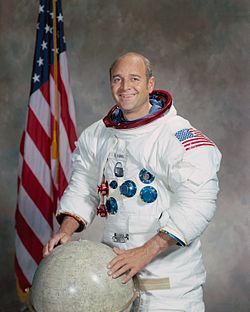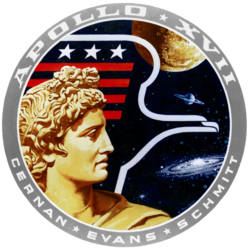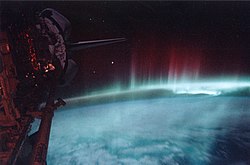

Fe, Fi, Fo, Fum, and Phooey were five mice who traveled to the Moon and circled it 75 times on the 1972 Apollo 17 mission. NASA gave them identification numbers A3305, A3326, A3352, A3356, and A3400, and their nicknames were given by the Apollo 17 crew (Eugene Cernan, Harrison Schmitt, and Ronald Evans). The four male mice, one female mouse, and Evans orbited the Moon for a record-setting six days and four hours in the Apollo command module America as Cernan and Schmitt performed the Apollo program's last lunar excursions.
Contents
The mice traveled in individual compartments of tubes inside an aluminum container with "a sufficient food supply, temperature control, and a reserve of potassium superoxide that absorbed the CO2 from their respiration and provided them with fresh oxygen." [1] One male mouse, A-3352, [2] died during the trip, and the four survivors were euthanized and dissected for their expected biological information upon their return from the Moon. [1]
The mice and the three astronauts were the last Earthlings to travel to and orbit the Moon. [3] Evans and the mice share two living-being spaceflight records: the longest amount of time spent in lunar orbit (147 hours 43 minutes), and the most lunar orbits completed (75). [4]




